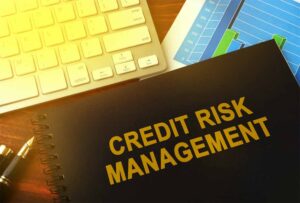Risk management was not born from the Wild West world of crypto, but it still applies. Some people are learning that the hard way. Sam Bankman-Fried, for example, lost billions for himself and his customers. The former FTX CEO told George Stephanopolous, during an interview for Good Morning America, “I wasn’t spending any of my time or effort trying to manage risk on FTX.” Don’t be like Sam Bankman-Fried.
The principles of treasury risk management can keep you from being caught unawares. And really, there’s no point in amassing the funds to call a treasury without knowing how to protect them. Depending on which treasury they belong to, those funds could grow and perhaps even create new money through loans, as some philosophical arguments go.
What is treasury risk management?
Some risks may be preferred (especially instead of others) for your organization. After all, no ship was built to stay in the harbor. On the other hand, it may be best to plan for a course dictated by Murphy’s Law. Per that old adage, anything that can go wrong, will.
For a treasury, plenty can go wrong. What happens to your cash flow if there is a sudden, unexpected need for liquid capital fast? Do you know where to get it? Would you have enough? Treasury risk management attempts to answer these questions and many more. It looks into the future and attempts to predict predicaments, decide how likely they may be, and then tries to imagine actionable solutions for each problem.
Types of Risk in Treasury Management
Treasurers can name risk types in their sleep. But you might find some of these risks familiar if you’ve ever owned or been involved in the financial operations of a business, too.
Operational Risk
As you run your business, you may have noticed how hiccups can derail your financial planning. Technology problems and outright fraud can be bracing reminders of your need to secure the day-to-day essentials, even when you have to hire someone else to help.
Liquidity Risk
Short-term liquidity needs are part and parcel of business for many treasuries. Business owners need to make payroll, and banks need to honor their customer withdrawal requests. What if your customers suddenly start withdrawing money at a fast clip? What if your business did not accurately forecast payroll expenses? Each of these scenarios can be planned for, with potential solutions put in place. Are your funds diversified enough? Do you know how to account for cash flow at every step in the process, including handling?
Credit Risk
You extend credit, believing customers will make good-faith efforts to repay. Further, you believe in their ability to repay with interest. Sometimes that does not happen. When customers fail to pay on loans or fail to pay you for provided services, you’ve realized a credit risk scenario. How about trades for services between parties resulting in default for one party? That issue also falls under the credit risk umbrella.
Interest Rate Risk
Remember when the Federal Reserve’s vice-chairman for supervision said SVB’s interest rate risk model “was not at all aligned with reality”? Talk about an extreme example of getting it wrong. In less catastrophic examples, interest rate risk can bungle your attempts at growth, but it doesn’t have to. With interest rates often going up, proper tools for managing the unknown can help keep your future expenditures in an acceptable, planned range.
Strategies for Handling Treasury Risks
Luckily, the wheel has been invented. The strategies for handling treasury risks are well documented. Let’s drill down to the sequence of steps usually taken to maneuver treasury risk and the ways they can reflect each organization individually.
Risk Identification
Is the call coming from inside the house? Sometimes, risks are clearly internal, such as a loose, undocumented procedure for handling money. Other risks may be external. Whatever the origin, identifying them is the first step in controlling risk. Your risks may mirror the industry you are in, but they could also be specific to your organization.
Risk Assessment
Here is where likelihood matters. Professionals can develop models to predict the probability of a certain risk coming to fruition. Depending on your unique profile, position, and structure, likelihoods may change.
Risk Evaluation
In this step, you may decide to steer into certain risks and away from others. Expertise could determine that approach and appetite for a specific threat.
Risk Response
Here, a skilled manager plays their hand after detailed consultations and studied reviews. Risk may be accepted, transferred, or transformed according to business needs.
Risk Reporting
This stage takes the results of risk response and documents them. Reflections are made, and any deviations will inform a better response, while expected outcomes can reinforce the predictive model. Reporting ensures that the response is carried out as directed.
Learn more about our Certified Treasury Manager certification through Noggin Guru. The self-paced course will help your new and existing treasury professionals step into their roles with confidence and exhaustive, thorough training.








